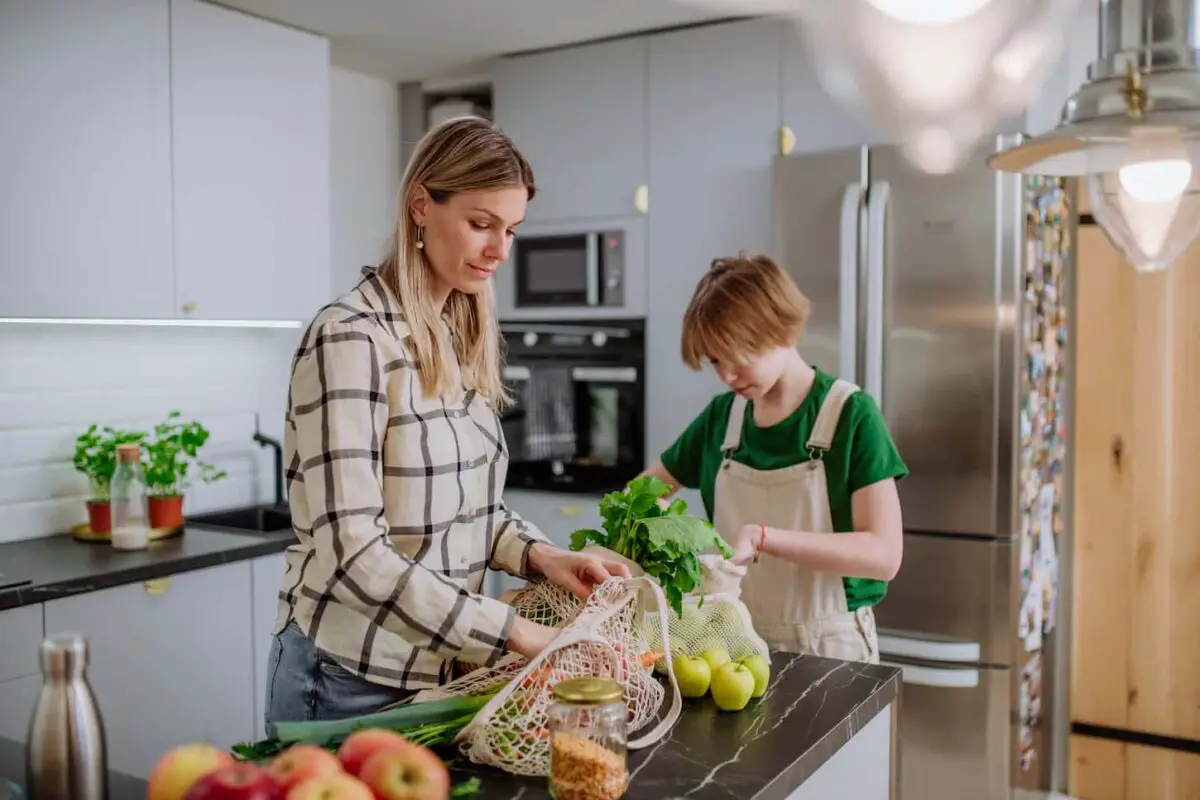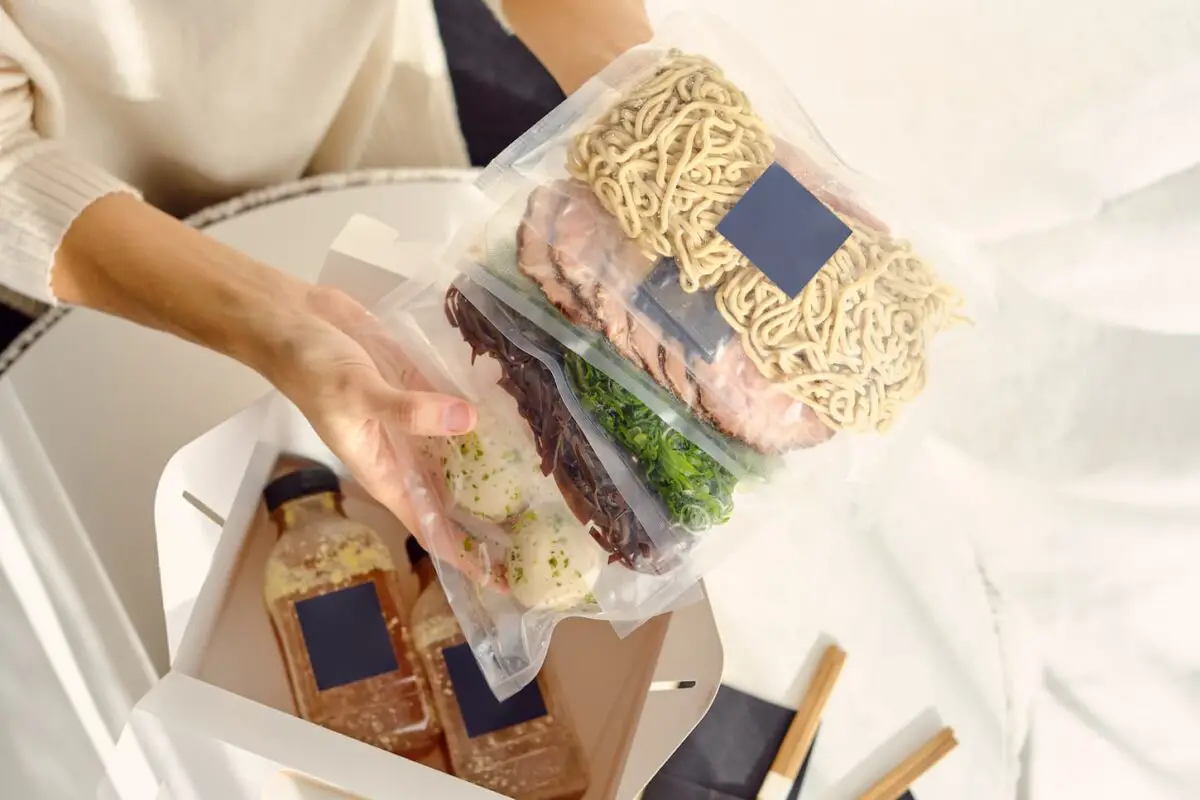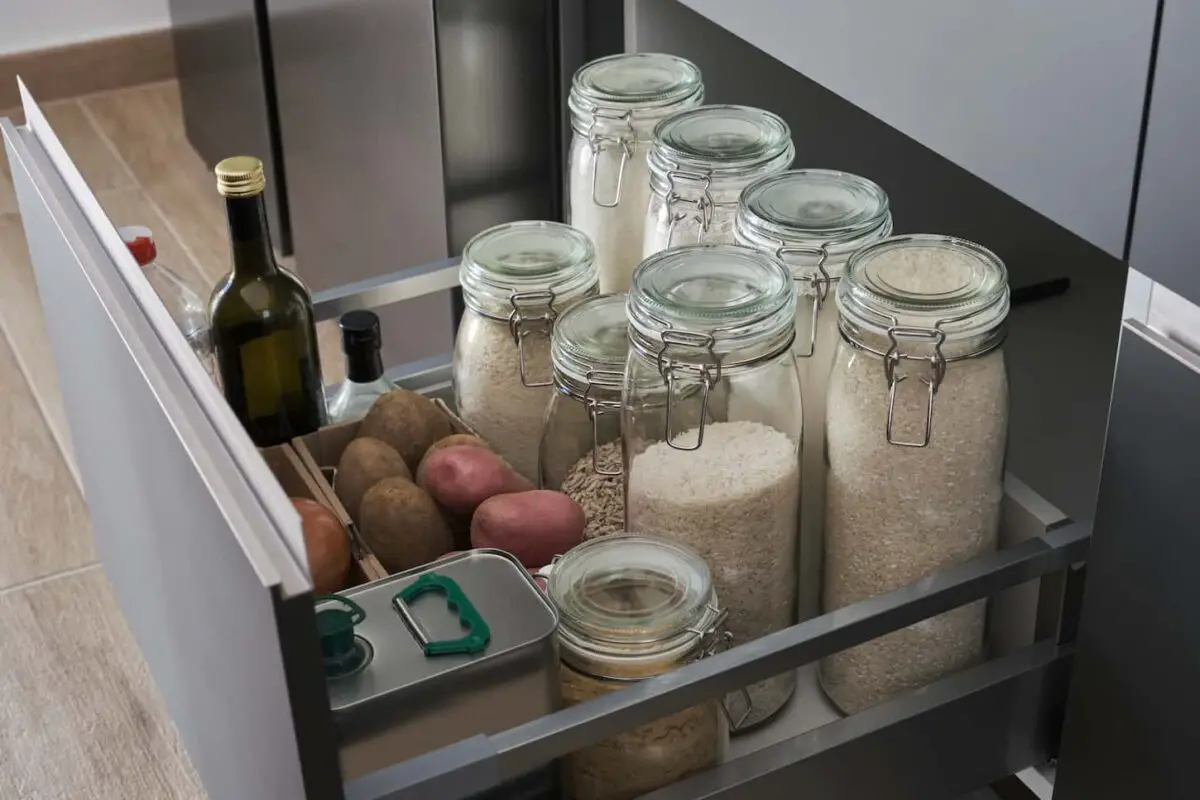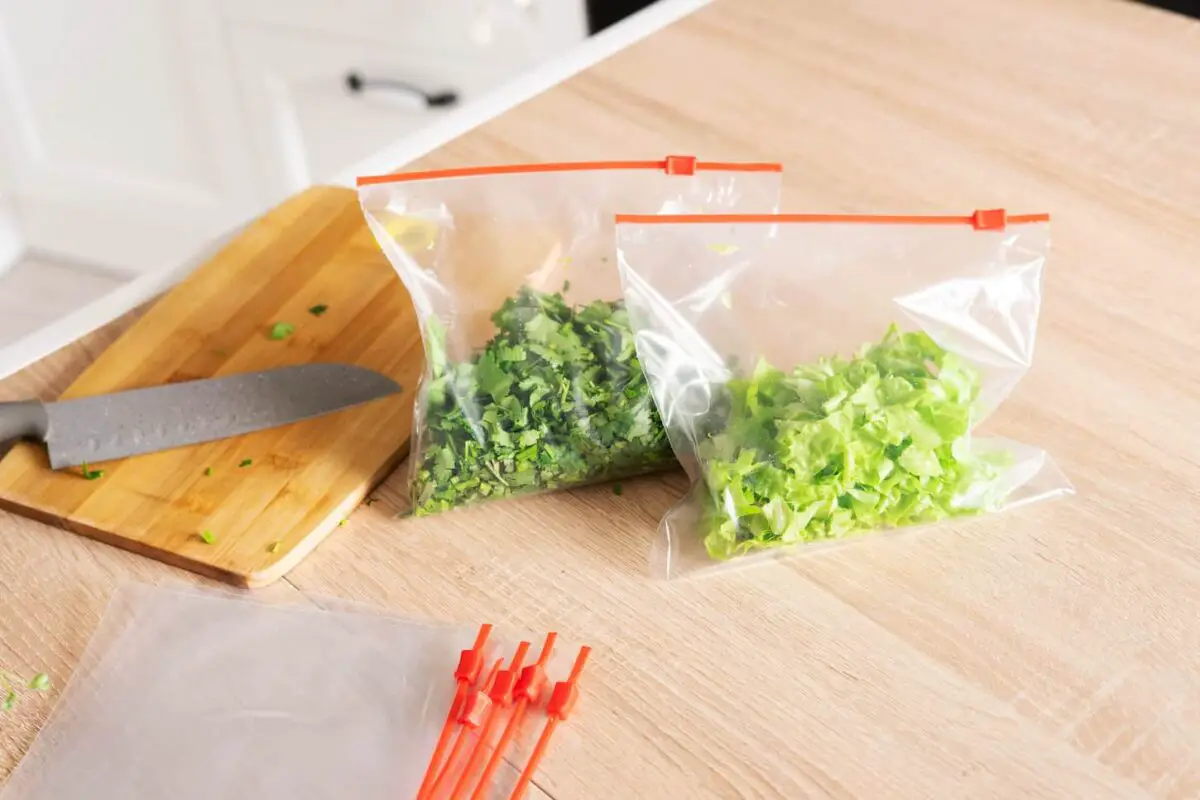Storing food long-term is a process that leaves us with vital supplies, regardless of any emergency situation. We must find an appropriate space to store food because if we keep it in the wrong place, it will spoil. We might wonder where the best area is to store food if we preserve it at home.
The best place for food storage is somewhere cool and dark, with low humidity and a consistent temperature. Cellars or indoor pantries are ideal places to store food because they have a stable environment regarding factors that affect food degradation: humidity, temperature, oxygen, and light.
If we don’t store our food in the correct place, there’s a chance it will perish before we get to use it. Finding the ideal area to store food can be challenging, so if we want to know exactly where to store food, let’s look at our complete guide below.

The Ideal Conditions for a Food Storage Pantry
A food storage pantry should be cool and dark, with a consistent temperature between 50 and 70 Fahrenheit. It must be dry, with low humidity, and should not be exposed to direct sunlight or extreme temperatures. Stored food should have as much oxygen removed as possible.
Temperature, light, oxygen, and moisture are the main things to consider when storing food because these are the things that affect the shelf life. If food is exposed to these elements, bacteria will flourish and spoil the food.
It’s worth investing in a temperature and humidity gauge and a dehumidifier – if necessary, to ensure the conditions are ideal for food storage in the pantry.
Note: oxygen can be removed from the food containers via a vacuum pump and/or an oxygen absorber. You don’t need to create a vacuum chamber-style pantry to store food – that’s not feasible. Cool sounding – but not feasible.
Where is the Best Place to Store Non-Perishable Food?
The best place to store non-perishable food is somewhere cool, dark, and with a consistent temperature. Cellars, basements, or a pantry room inside the house are good options. If there is no cellar or room for an indoor pantry, find a spare storage space in the house.
Basements can be damp, so if we store food in a basement, we must monitor the humidity levels. Underground areas are also susceptible to pests, so ensure all the food containers are rodent-proof if kept in a basement.
Here’s a list of places inside the home where we can store non-perishable food:
- An attic or crawlspace – as long as it’s insulated and temperature controlled.
- A coat closet – or any spare closet.
- Under beds
- On the high shelves in closets
- In vertical spaces – such as the floor in closets – cover the items with wood to protect them.
- A spare room
- Under furniture
- Under the stairs
Pick what works for you. Do your best to find a place with a reliable temperature, humidity level, and light level.
For example, we use a humidifier in our bedroom (it helps with my asthma). So keeping food stored in our bedroom would be a horrible idea. Instead, we have a food storage pantry downstairs with better humidity, light, and temperature control.
Where to keep canned foods
People should keep canned foods in a storage area with a consistent temperature between 50-70 Fahrenheit. In ideal conditions, canned food can last several years, but the quality may deteriorate after two years.
Containers (such as cans) naturally keep light away from food, but they are susceptible to rust in humid conditions, so keep them in a dry place. Rust can occur on the inside or outside of a can and may cause holes that will break the seal.
If we store cans above 75 degrees Fahrenheit, the contents deteriorate quickly, and never expose them to temperatures above 100 degrees. Don’t let cans freeze because this will damage the food’s structure and the can.
After opening canned food, transfer the contents into a food storage container and store it in the refrigerator.
Where to keep dehydrated foods
Keep dehydrated food in jars or mylar bags in a cool, dark place, ideally 60 degrees Fahrenheit. We must store dehydrated foods in a freezer to extend their shelf life. This is a good option for dehydrated food with high fat or moisture content.
To preserve dehydrated food short term, keep it in an airtight container. Never leave the container open for long periods because it will absorb moisture. Dehydrated food can last for up to a year in these conditions.
Use vacuum-sealed jars or mylar bags with oxygen absorbers to store dehydrated food long-term. Don’t use oxygen absorbers with food over ten percent humidity because botulism poisoning is a risk.
Keep the containers in a cool, dark pantry, and don’t expose the items to oxygen. Oxygen contains moisture and will spoil dehydrated food.

Where to keep freeze-dried foods
Keep freeze-dried foods in a cool, dark, dry place below 75 degrees Fahrenheit. Store it in mylar bags with oxygen absorbers or mason jars to ensure it does not absorb moisture.
Like dehydrated foods, moisture is the biggest concern with storing freeze-dried food. Keep items in airtight containers, and don’t leave them open for long periods. For long-term storage, vacuum seal the containers, use oxygen absorbers, and store them in a pantry.
What Factors Influence Where Food Storage Should Be Kept?
Temperature, light, oxygen, and humidity are the key factors influencing where food is stored, affecting food spoilage. Without heat, moisture, oxygen, and light, bacteria cannot thrive and spoil food.
Below, we’ll take a closer look at how temperature, light, and humidity affect the shelf life of food.
Temperature
The temperature of a food storage area has a massive effect on food shelf life. A pantry should be between 50 and 70 degrees Fahrenheit. Cooler temperatures – above freezing – will preserve food for longer, while temperatures over 70 degrees will cause the food to perish quickly.
Food will break down quicker in high temperatures because heat increases the risk of oxidation, and bacteria thrive in warm conditions. Temperature fluctuations will also damage food, so a food storage area must have a consistent temperature.
Light
Light causes many chemical reactions in food, which is known as photodegradation. If food is exposed to natural or artificial light for prolonged periods, it will degrade more quickly.
Exposure to light can make food discolored. It will also reduce the nutritional content and the overall quality and appearance.
Humidity
Mold, bacteria, and yeast thrive in damp conditions, and dried foods last longer because they do not contain moisture. Without moisture, microorganisms cannot thrive and destroy food.
If we store food in a humid atmosphere, it’s more likely to absorb moisture, which can lead to a bacterial invasion, making food unsafe to eat. The humidity levels in a pantry should be below 50%, and the area should be well-ventilated to prevent humidity.
Oxygen
Limiting the oxygen around stored food has more to do with spoilage than anything else due to the oxidation of the food. Limiting the oxygen can help control aerobic (air-requiring) bacteria from growing and causing food-borne illness, though it won’t prohibit anaerobic (air-not-required) bacterium from growing.
Foodborne illnesses come from both kinds of bacteria, so using an oxygen absorber won’t prevent all foodborne illnesses. However, it will help prevent oxygen-related spoilage.
Where Should You NEVER Keep Food Stored?
Never store food near a heat source such as a refrigerator, oven, hot pipes, water heater, or laundry machine. Do not use a utility room for long-term food storage. Never store food in direct sunlight, on humid surfaces, or in humid areas. Never store food in areas with temperature fluctuations.
Never store food in direct sunlight or directly on a concrete floor. Concrete is humid- and the temperature fluctuates. Always place food on cardboard or wooden pallets to protect it from the humidity on concrete floors.
Temperature fluctuations can cause the food to spoil, even if it’s stored properly. This is in part due to temperature-related food degradation and in part due to how condensation forms.
Can You Keep Food Storage Outside?
It is possible to keep food stored outside as a last resort, but in most cases, it will deteriorate quickly. Outside areas are exposed to humidity and fluctuating and often extreme temperatures, so they do not provide the ideal food storage conditions.
It’s tempting to store food in a garage or shed. But unless it’s insulated and heat and humidity regulated, the food will perish quicker, especially if we live in a place with seasonal weather. Outside food storage is also more vulnerable to thieves and damage in natural disasters.
If we must store food outside, it’s better to store it in Mylar bags because they offer the most protection against light, heat, and humidity.

What Are the Best Containers for Storing Food?
The best containers for storing food long-term are cans, Mylar bags, and Mason jars. People can also store food in vacuum-sealed or Ziploc bags or plastic containers, which will only preserve the food short term.
Let’s take a closer look at the different food storage containers:
Mylar Bags
Mylar bags are one of the most effective ways to store food long-term. They are made from layers of laminated food-grade aluminum and plastic, so they protect food from oxygen, moisture, and light. The downside is that rodents can easily chew through them.
Mylar bags are inexpensive and versatile – they come in many sizes and are lightweight and easy to use and handle.
Use high-quality, thick bags – and use them with oxygen absorbers and a vacuum sealer for long-term storage. We can reuse them a few times if we clean them out and cut off the seal at the top.
The only downside to Mylar bags is that they can be difficult to store – they don’t stack easily because of their shape – they’re not uniform. They are also vulnerable to rodent invasions. To protect Mylar bags from rodents, put them in robust storage containers, such as 5-gallon buckets.
Mason Jars
Mason jars are common in food stores because they are durable, reusable, and rodent-proof. They are made from glass with a screw-on lid, so they prevent air and moisture from contaminating food, but they will not protect it from light.
Mason jars are a good storage option for short and long-term food storage. If we want to store food long-term, choose ones with vacuum-adaptable lids to remove the air and moisture from the jars before storing them.
Regular Mason jars are ideal for short-term storage because we can easily access the food via the screw-on lid.
Mason jars come in many sizes, look attractive in the kitchen or pantry, and are convenient because we can see the contents inside. The downside is that they are heavy and take up a lot of space compared to bags, and they can smash easily.
Please note that glass is technically a “porous” material. In other words, the glass will let some air into the container, so it’s not as great as mylar.
Plastic Ziploc Bags
Plastic Ziploc bags are ok for short-term food storage but will not preserve food for long periods. They are thin, relatively fragile, and do not protect items from light or rodents, and oxygen will gradually seep through the plastic over time.
Store non-perishable food in Ziploc bags if the plan is to use it within a few weeks, but for long-term pantry storage, use a more robust food container.
Plastic Containers
Plastic containers such as Tupperware are an ideal solution for short-term food storage, but, like plastic bags, they are not completely airtight. They allow oxygen over time, so they are not ideal for pantry storage.
Homesteaders use food-grade 5-gallon plastic buckets to store dry goods such as flour. In ideal pantry conditions, dry goods can last up to 5 years in 5-gallon buckets. The buckets are durable, rodent-proof, and easy to stack, and we can also store Mylar bags in them to protect them from rodents.
Cans
Canning is one of the most traditional ways to store food long term. Cans are made from coated tin, aluminum, or steel and will not let in light. They also have a protective seal to keep oxygen and moisture out.
Large #10 cans are ideal for storing dehydrated and freeze-dried food long-term. The drawback to cans is that they aren’t reusable and need a sealing machine, so they’re not an economical storage option. Cans are also prone to rust in a damp environment.
Vacuum sealed bags
Vacuum-sealed bags are a good option for short-term food storage, but like plastic bags, they will let oxygen in over time, so they are not ideal for long-term storage. Don’t reuse vacuum bags; use a vacuum sealing machine to seal them.
Vacuum sealing is excellent for short-term food storage because the bags are light, take up less space than other containers, and are easy to handle. The downside to vacuum-sealed packages is that they are transparent and don’t protect food from light, and rodents can chew through them.

Best Products for Food Storage
Having the right products for your food storage can be the difference that makes or breaks your food quality in the years to come. Thankfully, a good range of options fits most any budget. Here are some items we’ve found to be necessities for building your own food storage.
Storage containers
- Best: Mylar bags – Harvest Right’s mylar bags are great, although you can order them from places like Amazon. Be sure to price shop!
- Good: Mason jars are still a good option for storing all sorts of foods. You can buy them online, though they are a better price locally if you can find them at a local grocery store.
- Good: Vacuum seal plastic is food-grade plastic great for long-term storage. It’s less pretty but functional
- Good: Ziploc bags are another must-have for any food storage fan. Get them where it makes the most financial sense.
If you’d like to store multiple products in a 5-gallon bucket, this is a great option as it’s food-grade rated.
Vacuum sealing products
- Vacuum sealers. There are a lot of vacuum sealers out there, with prices ranging all over the place. Get what works for your budget, like perhaps this option. We did splurge for a name-brand one, as it let us combine bag vacuum sealing and mason jar sealing all in one.
- If you don’t have a vacuum sealer but would like to vacuum seal mason jars, this is a new, cool option.
- You can never have enough oxygen absorbers on hand.
Other food storage products
- If you’re big into canning and want your own flywheel can sealer, here’s a great option. It’s not cheap, so be warned.
- This handy device will help you measure humidity. It’s nifty.
- Got too much humidity? This dehumidifier is what you need.
Key Takeaways and Next Steps
To store food long-term, keep it in a cool, dark, dry place, away from heat and direct sunlight. If the food is exposed to extreme temperatures, moisture, light, or air, it will spoil faster because these factors allow bacteria to thrive.
The best place to store food is indoors, in a pantry, basement, or cellar. Avoid storing food outdoors, in a garage, or anywhere with extreme temperatures and moisture.
To get the best results from food storage, use suitable containers to store the food, such as Mylar bags, cans, or vacuum-sealed Mason jars. We can also store food in plastic vacuum-sealed bags, Ziploc bags, reusable containers, or other containers, but these aren’t as suitable for long-term storage.
Resources
Learning from your own experience is essential, but learning from others is also intelligent. These are the sources used in this article and our research to be more informed as homesteaders.
- Food preservation | Definition, Importance, & Methods. (1998, August 23). Encyclopedia Britannica. https://www.britannica.com/topic/food-preservation/Light-induced-reactions
- Food Safety Education | For Educators | Competencies | General | Microbiology | Untitled. (n.d.). https://www.foodsafetysite.com/educators/competencies/general/microbiology/mic6.html
- Food Storage Condition – PMG Engineering. (2019, August 7). PMG Engineering. https://www.pmg.engineering/food-storage-condition/
- Food Storage Recommendations. (n.d.). https://theepicenter.com/storing-food
- Livermore, R. (2022, November 25). The 7 Best Long-Term Food Storage Containers | Different Types. Stocking My Pantry. https://stockingmypantry.com/best-long-term-food-storage-containers/
- National Center for Home Food Preservation | How Do I? Dry. (n.d.). https://nchfp.uga.edu/how/dry/pack_store.html.
- How to Store Freeze Dried Food. Harvest Right. (2019, November 15). https://harvestright.com/blog/2017/how-to-store-freeze-dried-food/
- Shelf-Stable Food Safety | Food Safety and Inspection Service. (n.d.). https://www.fsis.usda.gov/food-safety/safe-food-handling-and-preparation/food-safety-basics/shelf-stable-food
- Storing canned food. (n.d.). UMN Extension. https://extension.umn.edu/preserving-and-preparing/storing-canned-food
- Utah State University. (2022, June 11). 7 Factors That Prolong Your Food Storage Supply. USU. https://extension.usu.edu/news_sections/home_family_and_food/foodstorage.
- Vacuum Packing 101 – Vacuum Packing Info and Tips! (n.d.). U.S. Packaging & Wrapping LLC. https://uspackagingandwrapping.com/vacuum-packing-101.html
